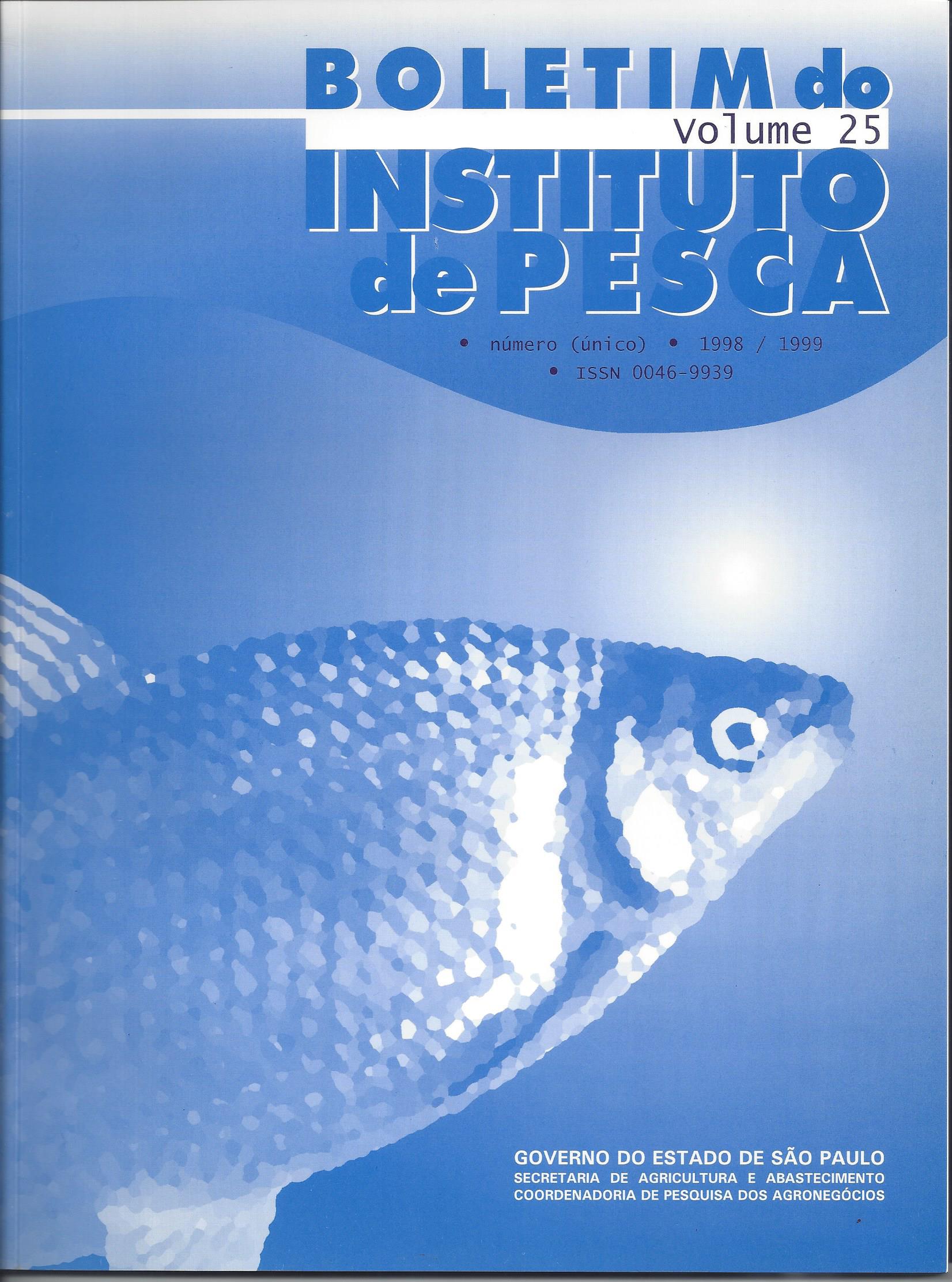Relative condition (Kn): a critery for selection of females of "piabanha†Brycon insignis (Steindachner, 1876) (Pisces, Bryconinae), for induced reproduction
Keywords:
fish, piabanha, Brycon insignis, reIative condition factor (Kn), induced reproductionAbstract
This research presents an alternative method for selection of females of the fish "piabanha", Brycon insignis, for induced reproduction. The method is based on a ponderaI index, the relative condition factor (Kn = Wt/a.Ltb ), considered as the quotient between observed weight and theoretic weight estimated through the length-weight relationship. During the months between December/1995 and February/1996, 75 females of Brycon insignis were selected to be submitted to the process of reproductive induction, considering the sample of intra-ovarian oocytes associated to external characteristics. In a total, 70 females received hormonal treatment; 6 females were in Maturation stage (not to be induced) and 5 were the control females. Considering the females submitted to hormonal treatment, forty-three responded positively, releasing eggs by extrusion, and 27 did not ovulate. In order to verify the relationship between the "well-being" of females and their answer to the applied treatment, the individual Kn values were calculated, as well as the average value, and the respective trust interval correspondent to the different groups. By the application of the Student's "t" test (α = 0.05 and Ho: mean Kn = 1.0), the values higher than 1.0 (p<0.05) were obtained in females that answered positively to the hormonal treatment and in those used as control. Values inferior to 1.0 (p <0.05) were observed in females that didn't answer to the hormonal treatment and in those in Maturation. The Analysis of Variance and the Test of Tukey-Kramer (p<0.001), applied among the evaluated groups of females, show that the values of Kn are extremely significant (F=22.482***). When considered individually the 43 females that answered positively, 36 presented Kn>1.0 and 7, values of Kn slightly inferior, corresponding to a "practical success" of 84% in the selection. The 27 females that didn't answer favorably to the hormonal induction presented values of Kn<1.0, that is to say, 100% of "practical success". The 5 females used as control presented Kn>1.0, showing that they also would answer favorably to the hormonal induction, and the 6 females considered in maturation presented Kn<1.0, confirming they were not prepared to reproduction.
References
L. A.; JOHNSON, D. L. (ed.) Fisheries Techniques. Maryland: American Fisheries Society, 468 p.
ECKMANN, R. 1984 Induced reproduction in Brycon erythropterus. Aquaculture, Amsterdam, 38:379-82.
LE CREN, E. D. 1951 The length-weight relationship and seasonal cycle in gonadal weight condition in the perch Perca fluviatilis. J. An. Ecol., 20(2): 201-19.
VERANI, J. R.; SATO, Y., FENERICH-VERANI, N.; VIEIRA, L. J. S. 1997 Avaliação de fêmeas de espécies ícticas aptas í indução reprodutiva: critério embasado no fator de condição relativo. In: SEMINÁRIO REGIONAL DE ECOLOGIA, VIII, São Carlos, UFSCar,Anais... p. 323-32.
ZAR, J. H. 1996 Biostatistical Analysis. 3 ed., New Jersey : Prentice-Hall, 718 p.










